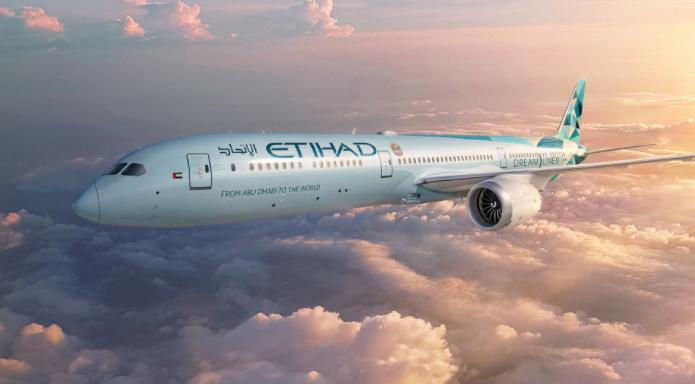
Etihad Airways’ sustainable flight reduces carbon emissions by 72%
Etihad Airways operated its most sustainable flight Oct. 23 to reduce carbon emissions (CO2) by 72% compared to the equivalent flight operated in 2019. The London Heathrow to Abu Dhabi flight was part of the Etihad Greenliner Program—a two-year partnership between Etihad and Boeing using Etihad’s Boeing 787 fleet as a test bed for sustainability improvements in partnership with organizations across the industry. In an industry-first, EY20 was the first commercial flight to explore contrail-avoidance. Working with UK-based SATAVIA, the team identified potential areas of ice super-saturated regions in the atmosphere where harmful contrails are likely to form, and the flight route was adjusted to avoid these areas. Based on the original and adjusted flight plan, the strategy avoided the production of approximately 64 tonnes of CO2e, with a fuel penalty of only 100kg, or 0.48 tonnes CO2.
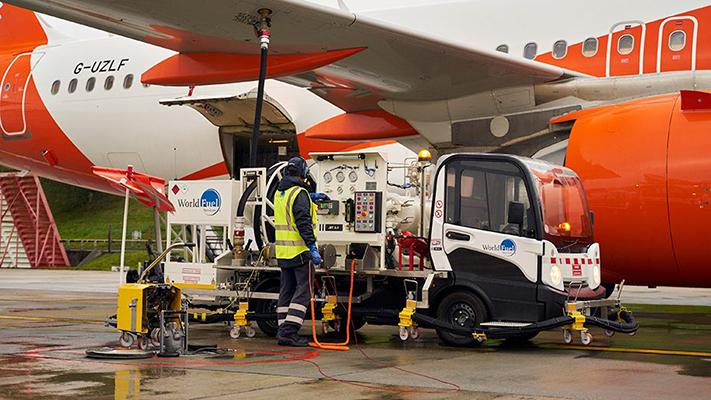
London Gatwick starts SAF operations with easyJet flight
London Gatwick Airport is using sustainable aviation fuel (SAF) on 42 easyJet flights during the COP26 Climate Change Conference in Gatwick, which runs from Oct 31-Nov. 12. The flights are powered by a 30% Neste SAF blend, delivered by fuel supplier Q8Aviation. Across the flights, CO2 emissions will be reduced by up to 70 tonnes. Neste’s SAF is produced from renewable and sustainable waste and residue raw materials, such as used cooking oil and animal fat waste. In its neat form and over its life cycle, Neste says the fuel can achieve a reduction of up to 80% of greenhouse gas emissions compared to fossil fuels. The SAF is blended with Jet A-1 at a depot upstream of Gatwick to create a drop-in fuel compatible with existing aircraft engines and the airport infrastructure. Q8Aviation then delivers the fuel to the main storage tanks at Gatwick.
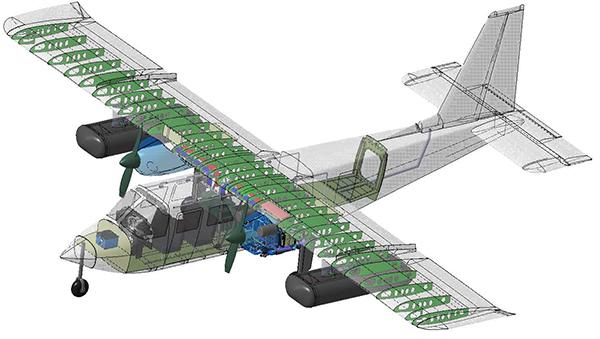
UK’s Scilly Isles to bring in zero-emission hydrogen flights
Isles of Scilly Steamship Group (ISSG), operator of air and sea links to the archipelago off the coast of southwest England, has forged an agreement to bring zero-emission hydrogen flights to the islands. The group has signed a letter of intent with Cranfield Aerospace Solutions (CAeS) and aircraft manufacturer Britten-Norman, which are working to convert the nine-passenger BN-2 Islander to hydrogen fuel-cell propulsion. Pressurized hydrogen stored in underwing tanks will feed fuel cells in the nacelles powering electric motors. CAeS plans to fly the demonstrator aircraft in September 2022 and is aiming for certification and entry into service by early 2024.

Norwegian regional seeks to navigate zero-emissions maze
Widerøe has partnered with Rolls-Royce and Tecnam to launch an all-electric aircraft for the Scandinavian commuter aircraft market and Widerøe`s first zero-emissions aircraft set to enter service in 2026. Widerøe Zero, launched Oct. 29, is “a consultancy-cum-incubator” for the forthcoming move towards electrically or hydrogen-powered aircraft, but will take an interest in more than new propulsion and power systems. Norway is likely to be one of the first countries to make the jump to the new generation of aircraft. Its topography makes air travel a necessity and the ultra-short hops between many airports make it well-suited to electrically powered aircraft.
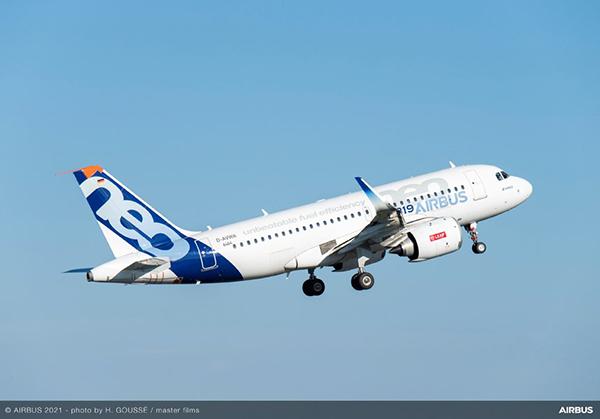
First A319neo flights launch with 100% SAF
Airbus, Dassault Aviation, ONERA, the French Ministry of Transports and Safran have launched the first inflight study of a single-aisle aircraft running on unblended sustainable aviation fuel (SAF). During the flight test over the Toulouse region on Oct. 28, one CFM LEAP-1A engine of an Airbus A319neo test aircraft operated on 100% SAF. Initial results from the ground and flight tests are expected in 2022. The unblended SAF is provided by Total Energies. It is made from Hydroprocessed Esters and Fatty Acids (HEFA), which primarily consists of used cooking oil, as well as other waste fats. The study—known as VOLCAN (VOL avec Carburants Alternatifs Nouveaux)—contributes to global decarbonization efforts currently underway across the entire aeronautical industry, and is benefiting from a financing of the France Relance recovery plan, the part thereof dedicated to the decarbonisation of aviation, which is implemented by DGAC under the supervision of Jean-Baptiste Djebbari, French Minister of Transports. The study’s ultimate goal is to promote the large-scale deployment and use of SAF, and certification of 100% SAF for use in single-aisle commercial aircraft and the new generation of business jets.
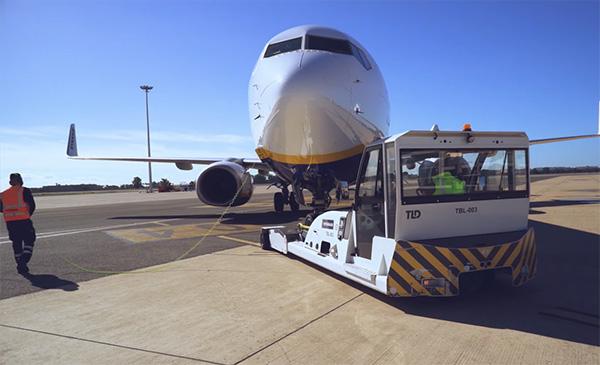
Ryanair launches electric handling at 11 European airports
Irish LCC Ryanair launched electric handling at 11 major European airports—Alicante, Barcelona, Madrid, Malaga, Mallorca, Seville, Santiago, Valencia, Amsterdam Schiphol, Gothenburg-Landvetter and Oslo—enabling zero emission turnarounds. Ryanair’s turnarounds will turn fully electric at Amsterdam Schiphol, Gothenburg-Landvetter and Oslo Airport through a partnership with Menzies Aviation. These turnarounds have been made possible through the airport’s provision of changing infrastructure necessary for electric equipment. The turnaround process incorporates a number of steps and pieces of electric equipment—including electric baggage tractor, electric baggage belt loader, passenger steps, electric ground power, and electric push back tractor which assists the aircraft with exiting the aircraft parking position—and this process is now carried out emission-free at these 11 locations.

ZeroAvia, Schiphol Group team up on hydrogen passenger flights
Hydrogen propulsion startup ZeroAvia has partnered with Royal Schiphol Group to launch zero-emission commercial passenger flights between Rotterdam The Hague Airport and London with a 19-seat aircraft in 2024. ZeroAvia is developing a hydrogen fuel-cell propulsion system for 19-passneger airliners and is converting a Dornier 228 regional turboprop into a flying testbed. US/UK startup is aiming for certification and market entry in 2024. ZeroAvia and airport operator Royal Schiphol Group are in advanced talks with airlines to agree on an operator for the planned route. The companies will also collaborate on demonstrating hydrogen refueling and integration into airport operations.

Alaska, ZeroAvia to develop hydrogen-electric Dash 8-400s
Alaska Air Group and startup ZeroAvia have partnered to develop a liquid-hydrogen fuel-cell power train capable of up to 5 megawatts to power part of Alaska Airlines’ fleet of 76-seat De Havilland Canada Dash 8-400 regional turboprops. As part of the conversion agreement, which covers the development and delivery of at least 50 ZeroAvia ZA2000 2-5 megawatt propulsion systems, Seattle-based Alaska Air Group will become an investor in the aircraft power company alongside the Amazon Climate Pledge Fund and Breakthrough Energy Ventures.

United, Rolls-Royce flights demonstrate capability to reach 100% SAF
Two different approaches to reaching 100% sustainable aviation fuel (SAF) use in aircraft have been tested in flight. On Oct. 13, United Airlines conducted a test flight on a blend of two synthetic fuels that produced a 100% drop-in replacement for petroleum jet fuel, while Rolls-Royce conducted a test flight as part of efforts to make its Trent engines compatible with 100% SAF by 2023. The United test flight used a blend of HEFA (hydroprocessed esters and fatty acids) synthetic paraffinic kerosene and a synthetic aromatic kerosene (SAK) produced by Virent. One engine burned the 100% SAF while the other used traditional fossil jet fuel. Rolls has committed to having all its Trent large commercial turbofans proven compatible with 100% SAF by 2023. In March, Airbus flew a Trent XWB-powered A350 fueled with 100% HEFA and now Rolls has flown a Trent 1000 engine—for the Boeing 787—on 100% HEFA on its 747-400 flying testbed. The 54-min flight from Tucson, Arizona, was conducted in collaboration with Boeing and SAF supplier World Energy. The Trent 1000 ran solely on 100% SAF while the testbed’s other three RB211 engines ran on standard jet fuel.

Akka Technologies unveil zero-emission regional aircraft design
European engineering services company Akka Technologies unveiled its concept for a zero-emission regional aircraft. The Green&Fly design has hydrogen fuel-cell propulsion and a box wing to minimize drag and energy consumption. The design is a follow-on to the Link&Fly multimodal air transport concept aircraft flown in subscale model form in 2019. The Brussels-headquartered company undertakes such internal R&D projects to develop engineers’ skills and acquire technology expertise valuable to its customers. Customers for Akka’s engineering services include Airbus and Boeing. Past internal R&D projects have included a collaborative mobile robot for aircraft inspection, an ultra-lightweight carbon-fiber airline seat structure and Omega, a vertical-takeoff-and-landing unmanned aircraft. Akka’s Green&Fly is a CS-25 transport-category short-takeoff-and-landing aircraft designed to carry 30 passengers up to 500 km (310 mi.) and operate from existing underutilized airports. Propulsion is provided by hydrogen fuel cells, batteries and supercapacitors.

Amedeo backs Aura’s electric regional aircraft
Aircraft finance and asset management company Amedeo entered into a strategic partnership with Aura Aero that includes a letter of intent to purchase 200 of the French startup’s planned 19-seat ERA hybrid-electric regional aircraft. Founded in 2018 by former Airbus employees, Toulouse-based Aura is developing a two-seat aerobatic aircraft, the Integral R, and plans to fly an electric version, the Integral E, in 2022. This will be the first step toward the ERA, which is planned to fly in 2024 and enter cargo and passenger service by 2027.
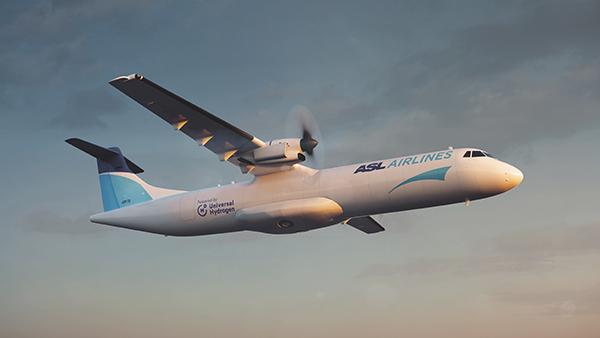
Universal Hydrogen raises $62 million for fuel-cell flight testing
Universal Hydrogen has raised an additional $62 million in funding to take the startup through initial flight testing of its hydrogen fuel-cell propulsion conversion for regional turboprops. The funding round takes the total raised so far to $85 million. Co-founded by former Airbus and United Technologies chief technology officer Paul Eremenko, Universal Hydrogen (UH2) is developing a modular hydrogen storage and logistics system. The startup plans to kick-start aviation demand for green hydrogen by developing conversion kits for the ATR 72 and De Havilland Canada Dash 8. Converted aircraft are planned to enter service in 2025. UH2 estimates it will take $300 million to complete its regional program. The latest funding round will allow the company to begin flight testing of its hydrogen-electric power train in 2022 at partner AeroTEC’s flight test site in Moses Lake, Washington. UH2 is developing the modular hydrogen capsules while Plug Power is providing the fuel cells and MagniX the electric motors for the 2-megawatt propulsion system.

Prometheus to deliver net-zero SAF
US startup Prometheus Fuels expects to begin delivering initial commercial quantities its carbon-neutral sustainable aviation fuel (SAF) toward the end of 2022. The “electrofuel” will be produced from captured atmospheric CO2 and renewable electricity. The first customer for the Santa Cruz, California-based company’s net-zero-carbon sustainable aviation fuel (SAF) is supersonic airliner developer Boom, which plans to use the fuel in flight tests of its Mach 2.2 demonstrator aircraft, the XB-1. Prometheus also has purchase agreements with American Airlines and Transcend Air, a startup planning to develop a regional air transport service using vertical-takeoff-and-landing (VTOL) aircraft. And the company has agreed to provide net-zero aviation gasoline to the World Champion Air Race, which plans its first season in 2022.

ANA, JAL set SAF target
Domestic and foreign airlines operating in Japan will need an estimated 2.3 billion liters (613 million gal.) of sustainable aviation fuel (SAF) to achieve the goal of net zero carbon emissions by 2050, concludes a joint report by All Nippon Airways (ANA) and Japan Airlines (JAL). While there has been government support for the development and production of sustainable aviation fuel (SAF) in Japan, domestic production has not yet been commercialized. This leaves airlines in Japan reliant on more costly imported SAF from existing supply chains, the report noted. Domestic SAF is expected to become available by 2030, and both ANA and JAL have joined the World Economic Forumʼs Clean Skies for Tomorrow Coalition and co-signed its September “ambition statement” to accelerate the supply and use of SAF to reach 10% of the global jet fuel supply by 2030.

LanzaTech to demonstrate waste-to-fuel SAF pathways
LanzaTech plans to demonstrate two new pathways for producing sustainable aviation fuel (SAF) with funding from the US Department of Energy. LanzaTech and the Energy Department’s Argonne National Laboratory has received a $4 million award to build and operate a pre-pilot facility to produce SAF from biogenic waste CO2, such as that produced by refining corn. The project will use renewable electricity from a solar farm at subsidiary LanzaJet’s Freedom Pines biorefinery in Soperton, Georgia, to produce green hydrogen. The hydrogen will then be used to convert waste CO2 to ethanol, which will then be converted to SAF suing LanzaJet’s alcohol-to-jet process. The goal of the project is to show efficient the CO2 conversion can be using the LanzaTech and argoone technology by producing the equivalent of 35 gal./day of fuel.

German plant to provide Lufthansa with synthetic kerosene
Germany has formally inaugurated the first commercial plant for producing carbon-neutral synthetic kerosene from water, captured CO2 and renewable electricity. Lufthansa has agreed to purchase at least 25,000 liters (6,600 gal.) of the power-to-liquid fuel annually over the next five years. The Fairfuel plant at Werlte in the Emsland district of Lower Saxony is operated by climate protection organization Atmosfair. A partnership of Lufthansa Cargo and logistics company Kuehne + Nagel has committed to purchase the fuel produced at the plant. The production facility uses renewable electricity from wind farms and solar power plants in the area. Direct air capture of carbon dioxide from atmosphere provides about 5% of the plant’s CO2 needs. Decomposition of organic material in an on-site biogas plans provides the rest of the CO2. Pictured: Lufthansa Cargo CEO Dorothea von Boxberg at the Oct. 4 inauguration of the Fairfuel synthetic kerosene plan.
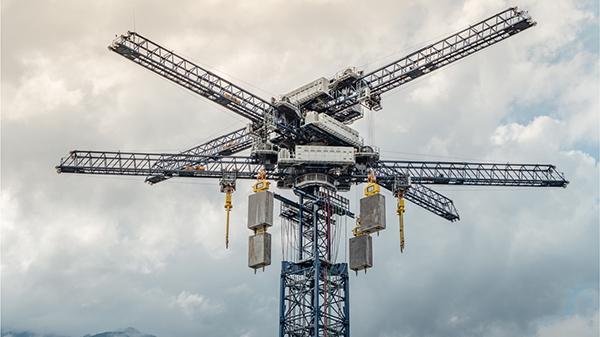
DG Fuels set to build SAF plant by mid-2022 in US
DG Fuels is moving ahead with plans to build a sustainable aviation fuel (SAF) plant in Louisiana after receiving funds to meet its cash requirements up to the expected closing on financing for construction, expected by mid-2022. Planned to be operational in 2025, the plant is expected to have a capacity of 151 million gal. a year if fully scaled up. DG said it has several firm commitments and nonbinding letters of intent with “brand-name airlines” for fuel offtake agreements. The plant will produce SAF by combining carbon from agricultural and timber waste with green hydrogen produced by electrolyzing water using renewable electricity. HydrogenPro will provide the 839-megawatt electrolzyer.
At the 77th IATA AGM in October 2021, IATA’s membership took a historic decision to achieve net-zero carbon emissions by 2050, which IATA director general and CEO Willie Walsh said can be achieved. “It will take a combination of sustainable aviation fuels (SAF), radical airframe designs, cutting-edge propulsion methods, efficiency gains, carbon capture technology and offsetting.”
Here's a look at some recent sustainability initiatives as the aviation industry pursues net-zero carbon emissions targets.

Comments
Amongst the lower hanging fruits for reducing the CO2 foot print of civil aviation is to use electrical actuation for all taxi operations of aircraft at the airport. Electrical actuation on the main or front landing gear will add mass and cost more or less two pax. However, tons of fuel will be saved mainly for the short-medium haul aircraft with several take off and landing per day. The technology is there and it can be implemented within less than a couple of months. In order to force the airlines to equip their planes with electrically actuated landing gears, one can imagine that airport would tax much more aircraft without it and that they would only be authorised to take off or land outside peak hours. The same has been applied for noisier and older airplanes, which are polluting more.
These solutions are extremely easy to apply and don’t need sophisticated infrastructure or new developments and will save billions of tons of CO2.
Another lower hanging fruit is to put PV solar panels on the roofs of airports. Airports are ugly and adding PV panels will not make them less beautiful. Airports consume MW of electrical power for lighting, airco, fridges, electrical cars, computers, ATC to name a few. It will work during daylight, but, anyway many airports have to close late in the night and solar power will reduce significantly the power bill and the resulting CO2 emissions. Converting DC to AC power with modern controllers is nowadays a piece of cake with a high level of efficiency.
Start first with is all what is high TRL before jumping into complex and unproven solutions.